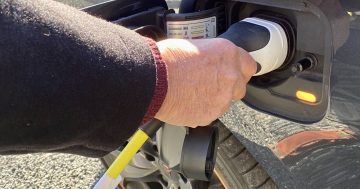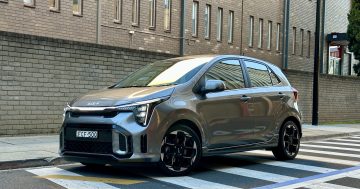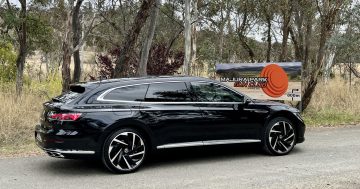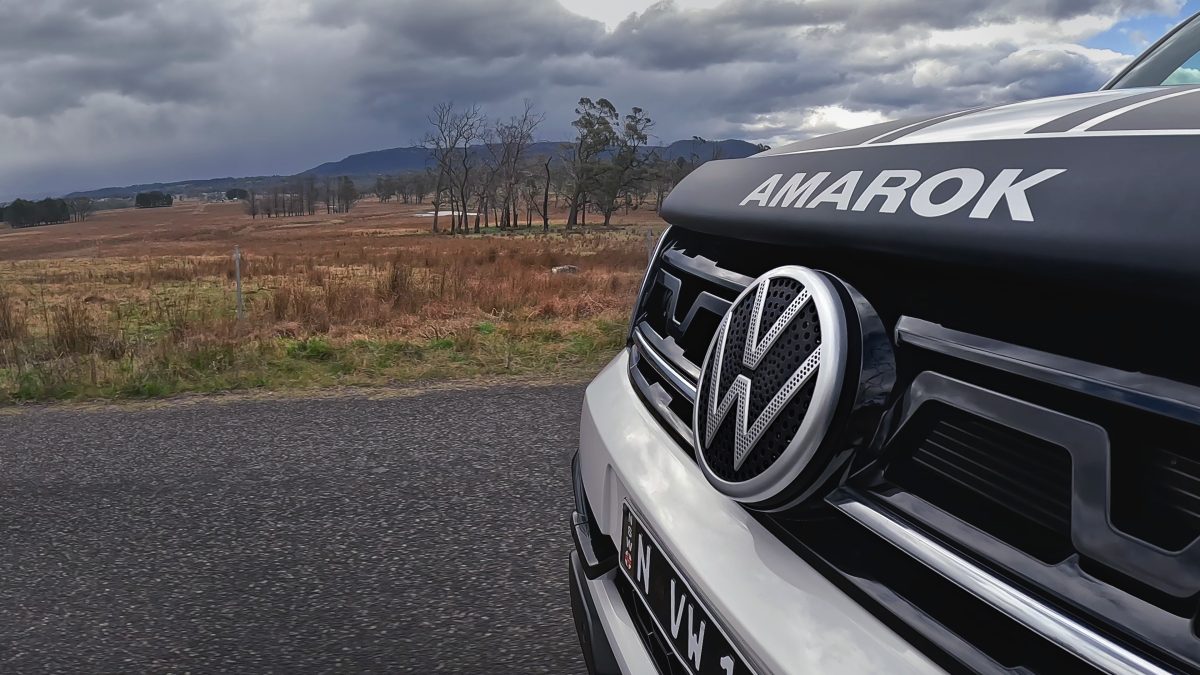
The ‘RooBadge’ is in the fourth stage of testing with the University of Melbourne, out on the road. Photo: Volkswagen Australia.
Forget those tack-on bullet-shaped animal repellers from the auto stores. When it comes to whispering ultrasonic sounds into the ears of roadside kangaroos so they decide to jump back into the foliage instead of into your pristine front bumper, there’s a new kid on the block.
Volkswagen has teamed up with the University of Melbourne and wildlife rescue organisation WIRES to develop a “seemingly simple device” that could “save countless kangaroos and hundreds of thousands of dollars in damage”.
The so-called ‘RooBadge’ looks like a standard VW badge and is mounted to the same place on the front grille. But it contains speakers that pump out a “mixture of natural and artificial sounds” to scare kangaroos from the side of the road ahead.
Sound familiar? It’s not.
“RooBadge does something no kangaroo deterrent has been able to do before,” University of Melbourne Associate Professor Graeme Coulson said.
“It’s difficult to produce a single sound that will deter all kangaroos because the species are different. Using advancements in car technology, we can change the sound deterrent by GPS location.”
In other words, the badge is connected to an in-car app, which calibrates the vehicle’s GPS coordinates with kangaroo distribution data to determine which species is prevalent in the area.
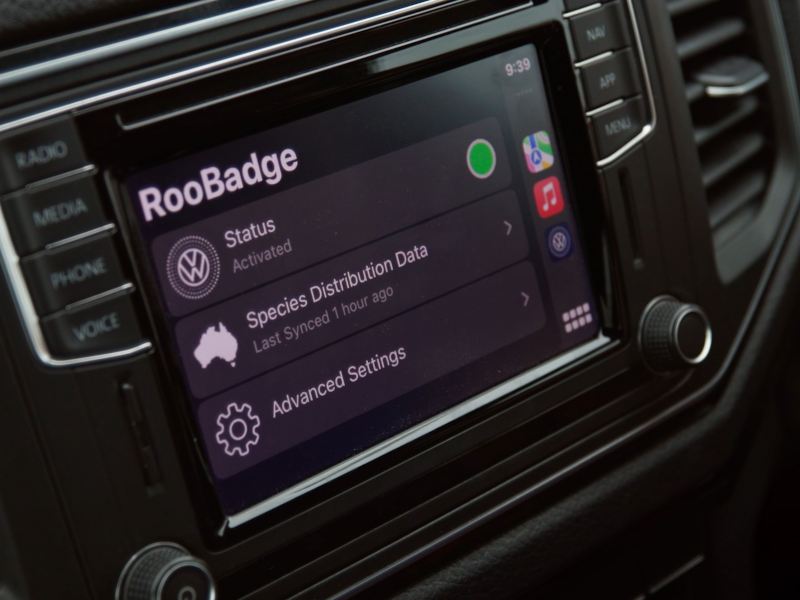
The badge works through an in-car app. Photo: Volkswagen Australia.
“We have worked on sounds that will be meaningful to Eastern Grey Kangaroos, things like dingo calls, alarm calls made by birds and the alarm thumps that kangaroos make to warn each other,” Associate Professor Coulson said.
“We will then be able to tweak the sound for other species.”
The Eastern Grey is prevalent all over the south-east of Australia, and collisions with cars have been “increasing significantly” every year, according to the government.
Rangers commonly record more than 1000 roadside kangaroo attendances per year and estimate there are twice as many collisions as attendances.
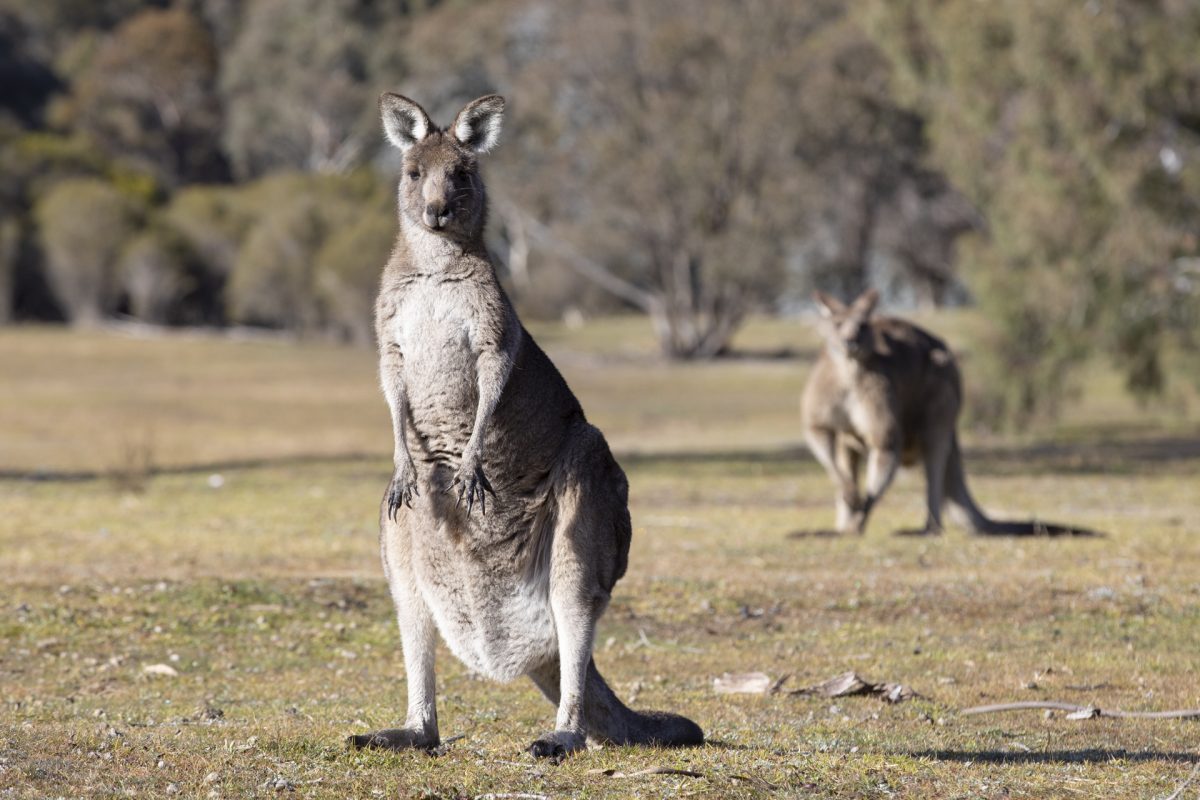
Most of VW’s testing so far has involved the Eastern Grey kangaroo. Photo: Michelle Kroll.
The peak time for crashes is between 5 pm and 10 pm when the kangaroos are most active. The rate is higher over winter, and there are more collisions following long periods of dry weather and near the full moon phase.
The government says “driver education” and “the use of fencing and/or underpasses” have the highest success rate for lowering the toll and that wildlife warning reflectors and ultrasonic devices “have been proven to be ineffective”.
Dr George Wilson is a professor of ecology at the Australian National University (ANU) and echoes that “there is no scientific evidence the existing commercially available kangaroo deterrents have any effect better than random”.
“Kangaroos do not appear to be put off or move away from ultrasound or other sounds from vehicles,” he told Region.
VW admits that “a scientifically proven vehicular animal deterrent has yet to be successfully developed” but says its technology doesn’t suffer from the same issues.
“The main problem for many devices, like whistles you can attach to your vehicle, is that they don’t produce sound louder than the car is already making, so they don’t project sound far enough ahead of the vehicle. Another problem is that they emit generic sounds that don’t mean anything to kangaroos, further failing to deter them from the road.”
However, Dr Wilson sees another issue that may rule RooBadge out of being a viable option in built-up areas.
“Even if it did work, how are you going to use one? What impact will [the sounds] have on drivers coming the other way?”
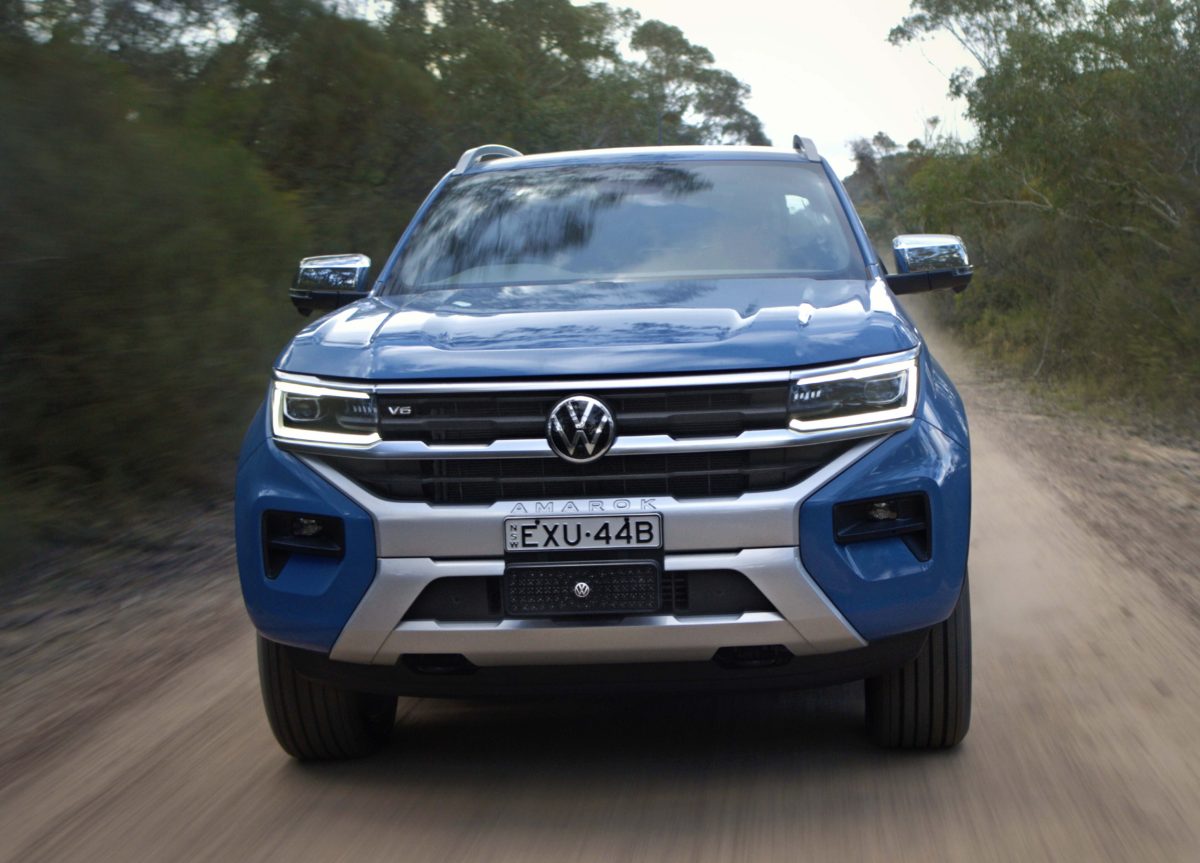
VW has also developed a universal version of the RooBadge so that owners of other cars can also benefit. Photo: Volkswagen Australia.
Over the past six months, VW has trialled the technology by fitting several Amarok utes with directional speakers, motion sensors and 360-degree cameras and monitoring the reactions of passing kangaroos.
Testing is moving into the next stage, involving real roads and wild kangaroos.
VW has also developed a universal version of the RooBadge that can be mounted to any car’s number plate.
“It’s the right thing to do,” VW Commercial Vehicles director Ryan Davies said of the decision to invest in the research.
“A collision with a roo can be devastating … Then there’s the possibility of a front-on collision with an approaching vehicle at country road speeds when one driver is trying to avoid striking a kangaroo. These are even more likely to have a fatal human outcome.”
Ultimately, it’s hoped the RooBadge can be expanded into Europe and the US to tackle their biggest roadside problem. It turns out deer share a lot in common with kangaroos, including size and hearing range.
Original Article published by James Coleman on Riotact.
Original Article published by James Coleman on About Regional.



